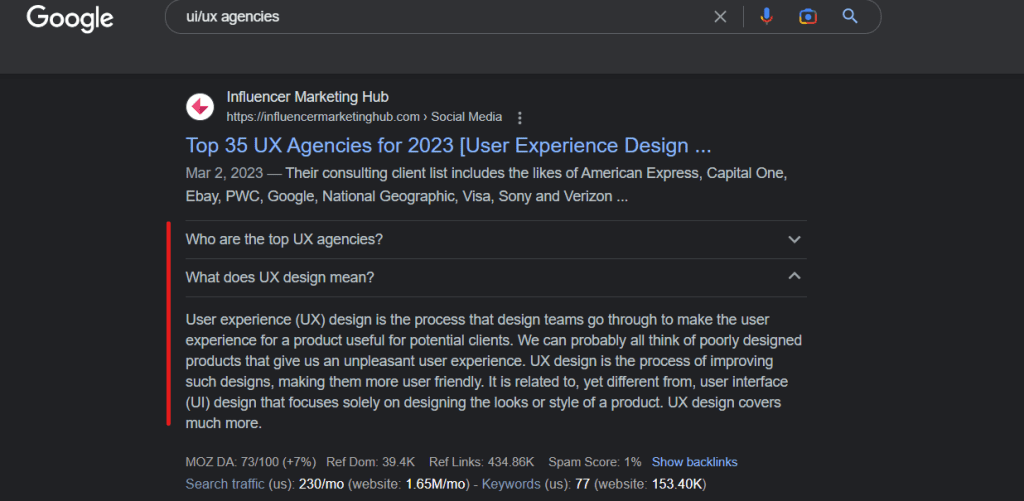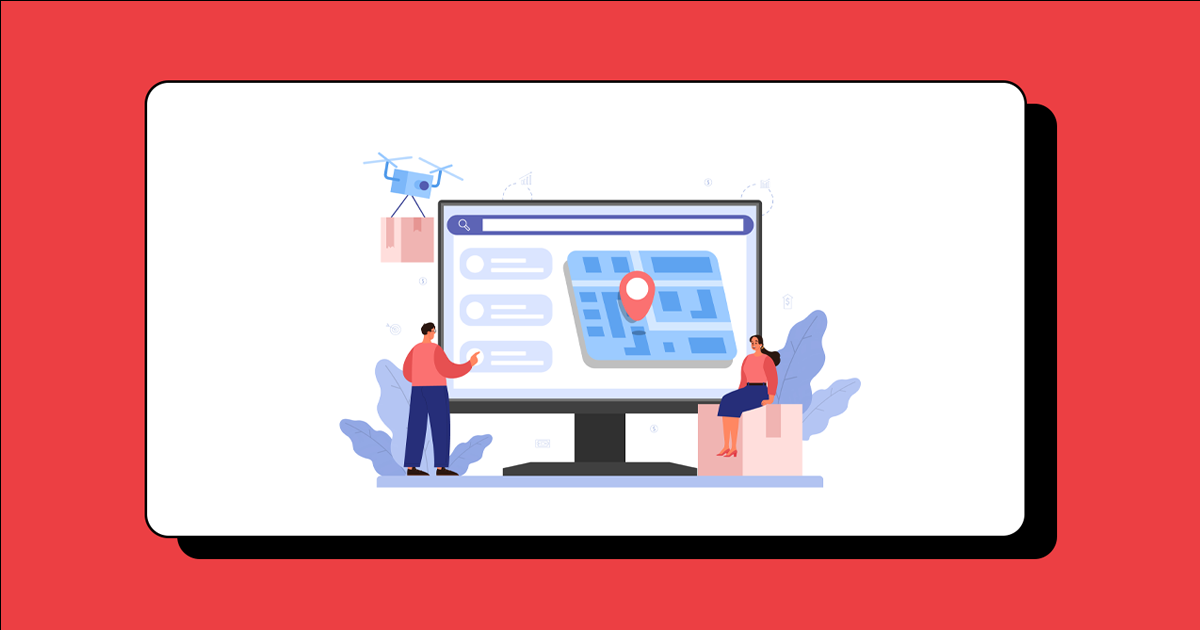B2B SaaS SEO Checklist To Boost Online Traffic in 2023
Estimated reading time: 9 minutes
B2B SaaS companies are gaining ground quickly, and with the competition heating up, having a strong SEO strategy in place can make all the difference. SEO for B2B SaaS companies is all about creating the right content to the right audience actively. So, before you hire a B2B SEO company, let’s get to know more about the industry itself.
In this article, we'll go over everything you need to know about B2B SaaS SEO, why it's important for your company, and how to make a thorough B2B SaaS SEO checklist to improve your online presence.
Contact us for a free consultation on your B2B SEO goals and requirements
Table of contents
- What is B2B SaaS SEO?
- What is the distinction between traditional SEO vs B2B SaaS SEO?
- Why is SEO important for B2B SaaS companies?
- B2B SaaS SEO Checklist
- 1. Conduct an in-depth keyword research to discover useful, relevant keywords for your company.
- 2. Improve the structure of your website, including the URLs, title tags, and meta descriptions.
- 3. Develop compelling content that is tailored to your audience and keyword targets.
- 4. Create credible, high-quality backlinks to your website from sources within your field.
- 5. Add optimized images.
- 6. Make sure your website loads quickly and is optimized for mobile devices.
- 7. Use Schema Markup
- 8. Add concise Call-To-Actions
- When to hire a B2B SaaS SEO agency?
- Final Thoughts
What is B2B SaaS SEO?
B2B SaaS SEO is the process of making a Software as a Service (SaaS) company's website rank higher in search engine results (SERPs). With the most effective SEO strategies, you can increase the website exposure for a SaaS, get more visitors, and eventually increase leads and revenues.
What is the distinction between traditional SEO vs B2B SaaS SEO?
The goal of traditional SEO is to attract users and convert them into paying clients. Its foundation is a shorter client life cycle and a greater focus on sales. As an example, a restaurant business must optimize their website for their target audience to discover them based on location and the food delicacies. On the other hand, SEO for SaaS businesses are more towards lead generation and lead nurturing.
For example, HubSpot CRM is a well-known Software offered as a service. So, the SEO strategy adopted by HubSpot involves lead generation and lead nurturing through various forms and mediums of content. Why? Because they want to ensure that their target audience finds necessary answers and services from the products. Blogs, podcasts, newsletters, research and so many other forms of informational content help them nurture their customers and generate new customers.
Why is SEO important for B2B SaaS companies?
For B2B SaaS businesses, having a solid SEO strategy is crucial because it helps them reach their target market and attract new clients.
When a SaaS company invests in the most effective SEO strategies, it can:
- Improve online presence and visibility.
- Produce more leads.
- Increase sales and revenue.
- Improve brand exposure.
- Build credibility, authority.
- Gain competitive advantage.
Most users are likely to invest in a product if the brand is trustworthy, reputable, and well-known. With the help of SEO, a SaaS company can add value to the brand as well as expand its reach to a larger audience.
So, what do you need to do to adopt an SEO strategy for your SaaS company? Follow the B2B SaaS checklist below.
Read More : 4 Types of SEO Services to Invest: Boost Organic Traffic 2023
B2B SaaS SEO Checklist
When building a solid B2B SaaS SEO checklist, keep the following points in mind:
1. Conduct an in-depth keyword research to discover useful, relevant keywords for your company.


A fundamental component of all SEO strategies should be keyword research. Around 71% of marketers say using strategic keywords was their number one SEO strategy in 2022. Selecting the right target keywords for your website will lay the groundwork for everything you utilize, including URLs, meta descriptions, title tags, web pages, headings, and much more.
2. Improve the structure of your website, including the URLs, title tags, and meta descriptions.
The importance of SEO extends beyond content marketing. Everywhere on your website needs it, and URLs are no exception. The URLs you use should be concise, to the point, and contain your main keyword.
For example, in this blog post the URL is www.ogilvymartech.com/b2b-saas-seo . We’ve added the main keywords in order to keep our URLs clean and on point. Simple as that!
After the URLs are optimized, the next thing you should focus on is optimizing your meta descriptions, headlines, and title tags. Your major keyword is required in these three areas for web crawlers to understand the content of your page and effectively discover you on search engine results pages (SERPs).
The fact that your users will notice your meta description and meta title on Google SERPs. So, make sure the meta tags are, enticing, intriguing and click-worthy. Also don’t forget to include your main keyword in the title tag. It helps the Google bots to understand what your page is about to rank on SERP and readers to grasp the key idea of the blog.
3. Develop compelling content that is tailored to your audience and keyword targets.
Content is king and it is one of the most important Google ranking factors when it comes to SEO. You need SEO-optimized content for your website to rank high on SERP. And 82% of marketers are actively involved in content optimization.
You must ensure your content is original by removing duplication. Duplicate content from your own website or from other websites is penalized by search engines, so be careful not to use or replicate it.
However, sometimes you do need to use duplicate material on your website, or you’ve reorganized a URL and need to adjust the path that web crawlers should take. If so, we suggest you visit Google's own Google Search Console support page to find out how to avoid duplicate content.
4. Create credible, high-quality backlinks to your website from sources within your field.


As one of the few reasons there are to outsource your SaaS link building efforts, 41% of businesses cite backlinking as their largest SEO practice difficulty.
Search engines can better understand the authority and relevancy of your website thanks to backlinks. Google and other search engines will immediately recognize your material as having high value and reliability if it has links to other high authority websites. It is even better if such websites link back to you.
Furthermore, internal linking enables crawlers to access all your links and comprehend how they relate to your context and pages. This in turn enables them to direct consumers to your relevant sites with greater accuracy.
Finally, you should check that all of the links are active and that none of them are broken, as this can undermine your SEO efforts.
5. Add optimized images.
It makes sense that search engines prefer websites with graphics as no one likes to read merely text on a page. Yet, it's crucial to remember that whether you use one image or ten, you must optimize each one.
Then, check to see if they have been compressed to prevent the page's loading time from skyrocketing—after all, 53% of mobile consumers will quit a website if content takes more than three seconds to load. TinyPNG is a useful free application that also features a charming panda that crows when each file has been successfully decompressed.


Ensuring your images relevant for SEO is the second thing you should do. To do this, add primary and secondary keywords to the image description, file name, and caption.
6. Make sure your website loads quickly and is optimized for mobile devices.
It's critical for websites to be mobile-friendly given that 58% of all website traffic comes from a mobile phone and that the 6.4 billion smartphone users globally utilize a variety of mobile devices. Moreover, 72% users will access the web solely by mobile by 2025.
What does "mobile friendly" actually mean? It's not only that the screen is getting smaller, though. This means that whether you're using a tablet, a smartphone, or a large TV screen, the website will adapt to provide you a flawless experience. Hence, the web design should adjust, including text and button sizes, graphics, and overall navigability. Consider touch screen vs. mouse navigation while making this decision.
7. Use Schema Markup


This sample image from Google SERP shows an article schema or structured data. The highlighted area in red provides answers to most user's inquries. Schema markup is a great approach to ensure the appearance of your content on SERPs and to direct users and crawlers to the key information you have in your content. There are countless Schemas or structured dara such as product, recipe and so on.
Schema markup is ideal for displaying the important data you have to provide for a certain user intent. For instance, when browsing for a restaurant, a potential customer would be interested in the menu, location, hours of operation, and reviews.
Create the rich snippets your industry, business, or product deserves using schema markup, and watch the appropriate users flood in.
8. Add concise Call-To-Actions
Offering high-quality content is excellent, but you also want your content to point to further information on your page or directly to your sign-up or free trial site. Clear and consistent call-to-action buttons will improve your page's performance, direct users to the right place, and boost conversions.
For example, call-to-actions such as ‘get in touch’ or guiding the users to subscriptions.
Read More : E-commerce SEO Checklist to Drive Sales in 2023
When to hire a B2B SaaS SEO agency?
So, let’s say your website appears to be well-designed but if it’s bad at generating sales, which is when you should hire SEO services for your B2B SaaS company.
Next, if you're beginning a SaaS company and want to target the proper market, establish an online presence, and get customers knocking on your door without having to spend a lot of money on paid advertisements, you'll need to outsource B2B SEO services.
You should also consider hiring an agency if you don't have the knowledge or skills on staff to handle your B2B SaaS SEO.
You can get access to innovative tools and technologies, specialized knowledge, and a committed team of SEO experts from a B2B SaaS SEO agency, all of which can help you achieve your company objectives.
Read More : SEO Company - How To Choose The Best in 2023
Need to outsource your B2B SaaS SEO services? Let's have a chat!
Final Thoughts
In conclusion, B2B SaaS SEO is an essential component of any effective online marketing plan. You can make sure your company grows over the long term, stays competitive, and reaches its target market by using the criteria and investing in the appropriate tools and resources.
Read Next : B2B SEO Tools: How to Choose the Best One for Your Business?




